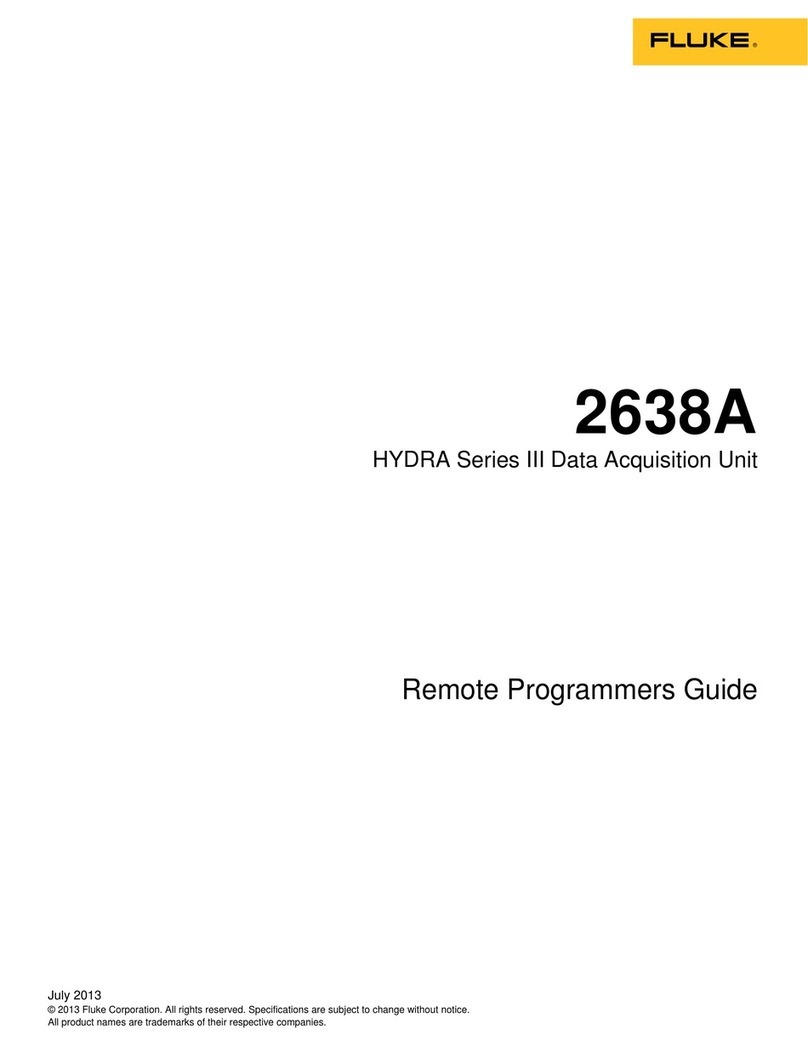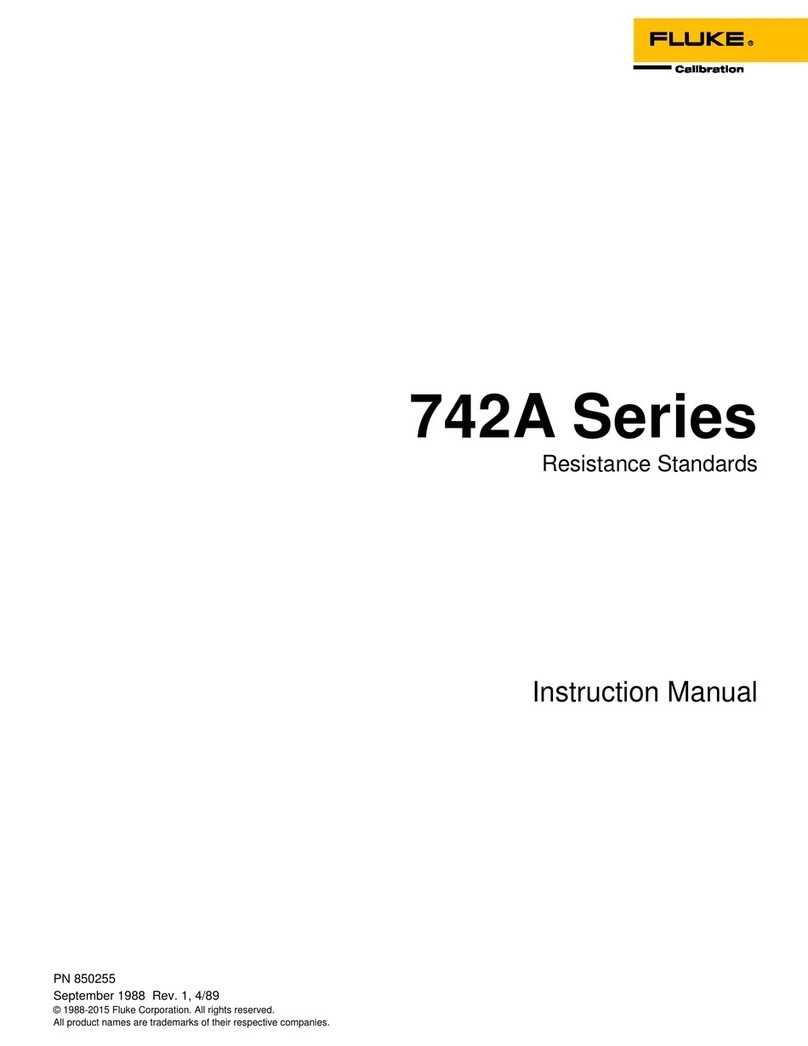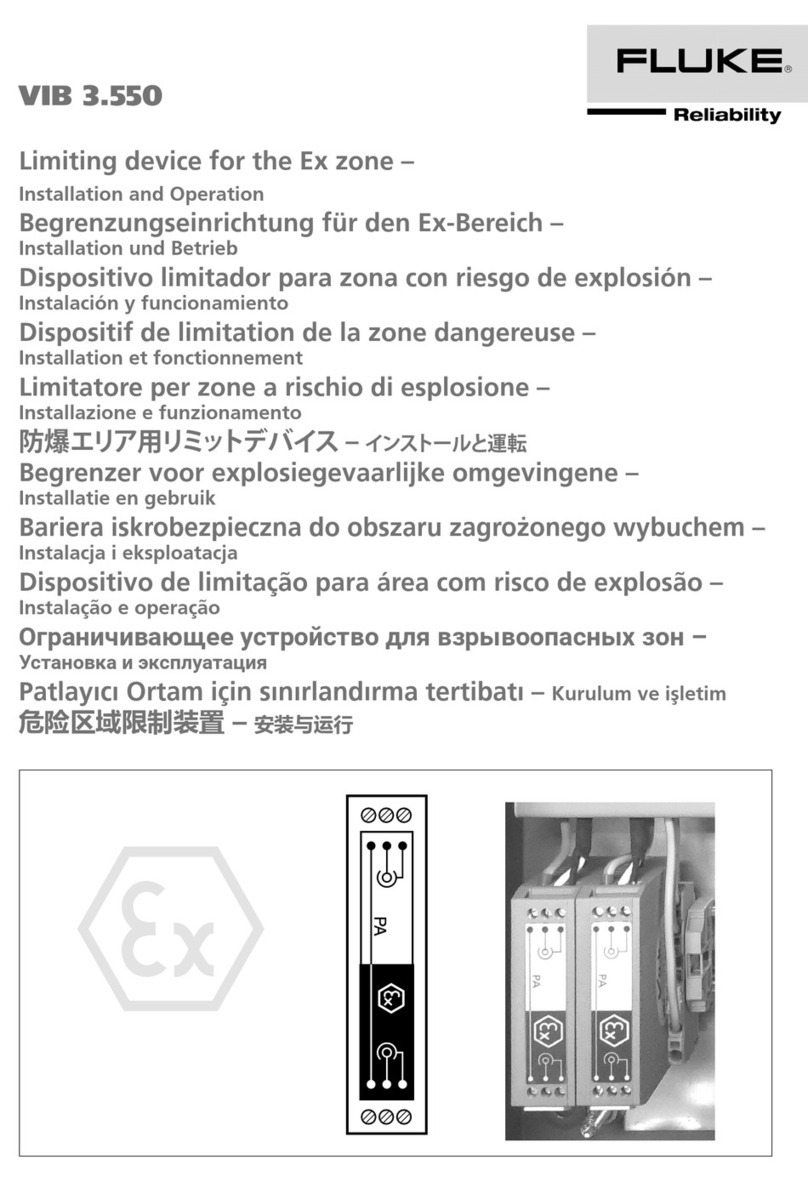
WARRANTY
Notwithstanding any provision
of
any agreement the follo
win
g warran
ty
is exclusive:
The JOHN FLUKE MFG. CO .. INC
..
warrants each instrument
it
manufactures to be free from defects in material and
workmanship under normal use and service for the period
of
1 year from date
of
purchase. This warranty extends only
to
the
or
iginal purchaser. This warranty shall not app
ly
to
fuses. disposable batteries (rechargeable type batteries are
warranted
for
90 days),
or
any product
or
parts which have been subject
to
misuse, neglect, accident,
or
abnormal
conditions
of
operations.
In the eve
nt
of
failu
re
of
a product covered by this warranty,
John
Fluke Mfg. Co., Inc., will repair and calibrate
an
instrument returned
to
an authorized Service Facili
ty
within 1 year
of
the original purchase; provided the warrantor's
examination discloses
to
its satisfaction that the product was defective. The warrantor may, at its option, replace the
product in lieu
of
repair. With regard
to
any instrument returned within 1 year
of
the original purchase, said repairs
or
replacement will be made without charge. If the failure has been caused by misuse, neglect, accident,
or
abnormal
conditions
of
operations, repairs
will
be billed at a
nom
inal cost. In such case, an estimate
will
be submitted before
work is started,
if
requested.
THE FOREGOING WARRANTY IS IN LIEU OF ALL OTHER WARRANTI
ES,
EXPRE
SS
OR IMPLIED,
INCLUDING
BUT
NOT
LIMITED TO ANY IMPLIED WARRANTY OF MERCHANTABILITY, FITNESS,
OR
ADEQUACY FOR ANY PARTICULAR PURPOSE
OR
USE. JOHN FLUKE MFG. CO., INC., SHALL
NOT
BE
LIABLE FOR ANY SPECIAL, INCIDE
NTAL
,
OR
CONSEQUENTIAL DAMAG
ES
, WHETHER IN
CONTRACT, TORT, OR OTHERWISE.
If
any failure occurs, the following steps should
be
taken:
1. Notify the
JOH
N FLUKE
MF
G. CO., INC.,
or
nearest Service faci li
ty
, giving full details
of
the difficu
lt
y, and
include the model numbe
r,
type number, and serial numb
er.
On
recei
pt
of
this information, service data,
or
shipping instructions will be forwarded to you.
2.
On receipt
of
the shipping instructions, forward the instrument, transportation prepaid. Repairs will be
made at the Service
Fa
cility
and the instrument returned, transportation prepaid.
SHIPPING TO MANUFACTURER FOR REPAIR
OR
ADJUSTMENT
All shipments
of
JOHN FLUKE MFG. CO. , INC
.,
instruments should be made via United Parcel Service
or
"Best
Way"*
prepaid. The instrument should be shipped in the
or
igin
al
packing carton;
or
if it
is not available, use any suitable
container that is rigid and
of
adequate size. If a substitute container is used, the instrument should be wrapped in paper
and surrounded w
ith
at
least
four
inches
of
excels
ior
or
similar shock-absorbing material.
CLAIM FOR DAMAGE
IN
SHIPMENT TO ORIGINAL PURCHASER
The instrument should be
thor
oughly inspected immediately upon original delivery
to
pur
chase
r.
All material in
th
e
container should be checked against the enclosed packing list. The manufacturer will
not
be responsible
for
shortages
against the packing sheet unl
ess
notif
ied immediately. If the instrument is damaged in any way, a claim should be
fil
ed
with the carrier immediately. (
To
obtain a quotation
to
repair sh ipment damage, contact the nearest Fluke Technical
Center.} Final claim and negotiations with the carrier must be completed
by
the customer.
The JOHN FLUKE MFG. CO., INC,
will
be happy
to
answer all applications
or
use questions, which
will
enhance
your
use
of
th
is instrument. Please address
your
requests
or
correspondence to:
JOHN
FLUKE MFG. CO., INC., P.O. BOX
C9090, EVERETT, WASHINGTON 98206, ATTN: Sales Dept. For European Customers: Fluke (Holland) B.V.,
P.O.
Box
5053, 5004
EB
, Tllbu
rg,
The Netherland
s.
'For
Eu
ropean customers,
Air
Freight prepaid.
John
Fluke
Mfg
. Co.,
Inc
., P.O.
Box
C9090, Everett, Washington 98206
Rev. 6/
81































